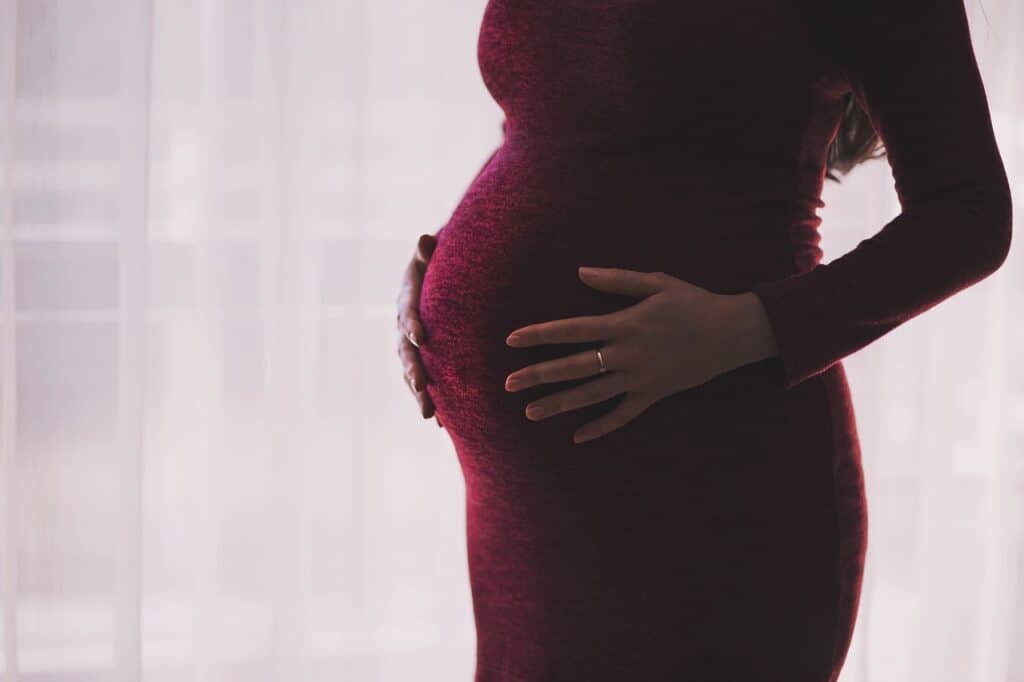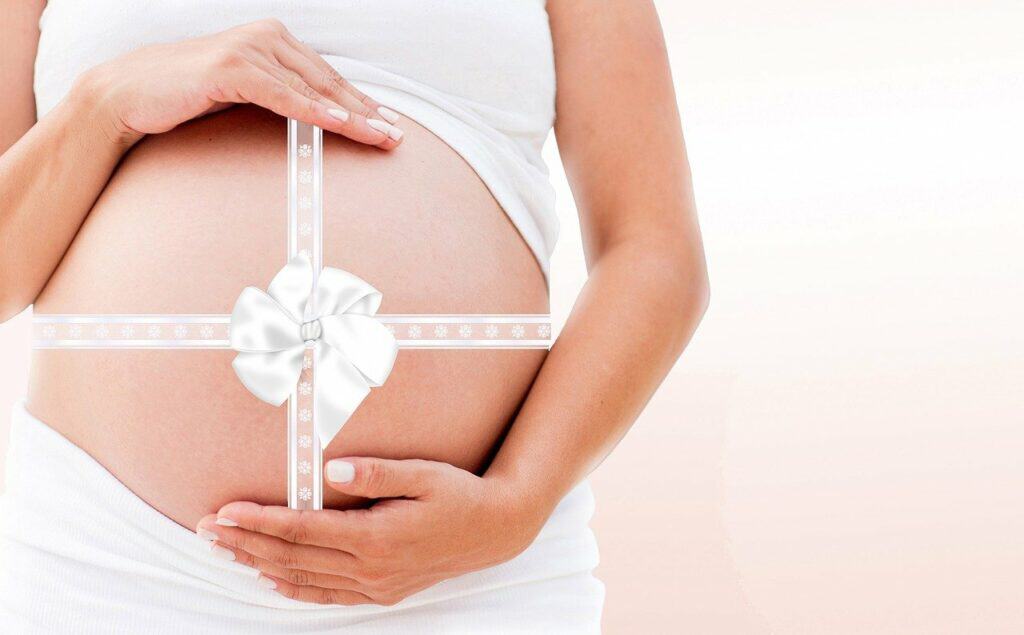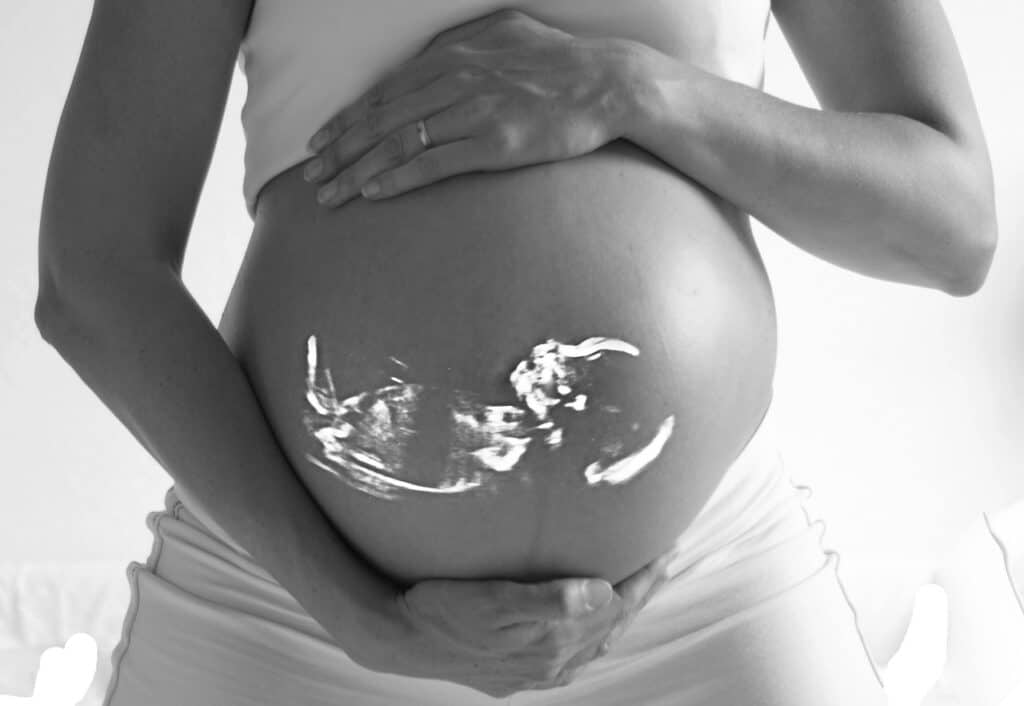Foods That Make Baby Move in Womb fetal movements are a crucial part of pregnancy, indicating the well-being and development of the baby. Expectant mothers often look forward to feeling their baby move, and it can be an exciting and reassuring experience.
However, some women may worry if they do not feel their baby moving as often as they would like. While there are many factors that can influence fetal movement, such as the baby’s position and the mother’s activity level, nutrition can also play a role in how active a baby is in the womb.
Research suggests that certain foods may increase fetal movement. Spicy foods, for example, are believed to stimulate the digestive system and increase movement in the womb. Similarly, foods high in sugar or caffeine may also cause a baby to become more active.
However, it’s important to note that every baby is different, and what works for one may not work for another. Additionally, it’s crucial for expectant mothers to maintain a healthy and balanced diet throughout their pregnancy, rather than solely focusing on foods that may increase fetal movement.
Key Takeaways
- Fetal movements are an important part of pregnancy and can indicate the well-being and development of the baby.
- Certain foods, such as spicy foods, high-sugar foods, and caffeinated beverages, may increase fetal movement, but it’s important to maintain a healthy and balanced diet.
- Every baby is different, and what works for one may not work for another when it comes to increasing fetal movement through diet.
Understanding Baby Movement in the Womb

Feeling the baby move inside the womb is one of the most exciting and reassuring experiences for pregnant women. Baby movement is a sign of a healthy pregnancy and indicates that the baby is growing and developing as expected.
During the second trimester, around 16-25 weeks of pregnancy, the baby starts making small and subtle movements, also known as quickening. These movements are often described as flutters, bubbles, or butterflies in the stomach. As the baby grows and gains more strength, the movements become more noticeable and frequent.
By the third trimester, the baby is much larger and has less space to move around in the womb. However, the movements are stronger and more distinct. The baby may kick, roll, or stretch, and the movements may even be visible from the outside.
It is important for pregnant women to monitor their baby’s movement and report any changes to their healthcare provider. Regular movement is a sign of a healthy baby, and kick counting can help detect any potential problems. Kick counting involves tracking the number of kicks or movements felt in a set period of time, usually one hour.
It is important to note that every baby is different and may have their own pattern of movement. Some babies may be more active in the morning, while others may be more active at night. However, if there is a significant decrease in fetal activity or no movement at all, it is important to seek medical attention immediately.
In summary, understanding baby movement in the womb is an important aspect of pregnancy. Regular movement is a sign of a healthy baby, and kick counting can help detect any potential problems. Pregnant women should monitor their baby’s movement and report any changes to their healthcare provider.
Factors Influencing Baby Movement

There are several factors that can influence a baby’s movement in the womb. Understanding these factors can help parents-to-be better understand their baby’s behavior and take appropriate steps to ensure their well-being.
Uterus Position
The position of the uterus can have a significant impact on fetal movement. In general, babies tend to move more when the uterus is in a more vertical position, such as when the mother is standing or sitting upright. When the uterus is in a more horizontal position, such as when the mother is lying down, fetal movement may be less pronounced.
Noise and Light
Babies in the womb can be sensitive to external stimuli such as noise and light. Loud or sudden noises may startle the baby, causing them to move or kick. Similarly, exposure to bright lights or flashing lights may also cause the baby to move.
Exercise and Movement
Maternal movement and exercise can also influence fetal movement. Activities such as walking, stretching, and prenatal yoga can help promote fetal movement. On the other hand, activities that involve sudden or jarring movements, such as jumping jacks or running, may cause the baby to move less.
Blood Sugar Levels
Blood sugar levels can also affect fetal movement. When a mother’s blood sugar levels are low, the baby may move less. Eating a balanced diet with regular meals and snacks can help maintain stable blood sugar levels and promote fetal movement.
Caffeine and Adrenaline
Caffeine and adrenaline can both have a stimulating effect on fetal movement. However, it’s important to consume these substances in moderation, as excessive amounts can have negative effects on fetal development.
Oxytocin
Oxytocin, a hormone that is released during labor and breastfeeding, can also stimulate fetal movement. However, it’s important to note that excessive amounts of oxytocin can cause contractions and premature labor.
Overall, there are several factors that can influence fetal movement in the womb. By understanding these factors, parents-to-be can better understand their baby’s behavior and take appropriate steps to promote their health and well-being.
Nutrition and Baby Movement

Nutrition is an essential aspect of fetal development, and certain foods may increase or decrease the baby’s movement in the womb. A healthy diet during pregnancy can provide the necessary nutrients for fetal growth and development, and it can also encourage the baby to move more frequently.
Consuming foods high in sugar or spicy foods may increase the baby’s activity level due to the sudden rush of energy. However, it is essential to consume these foods in moderation as excessive sugar intake can lead to gestational diabetes and cause harm to both the mother and baby.
Cheese, nuts, and dates are excellent sources of nutrients such as protein, fiber, and iron, which can promote fetal growth and development. Additionally, consuming pizza with garlic and meat can provide the necessary nutrients for fetal development and increase the baby’s movement in the womb.
Superfoods such as prenatal vitamins, eggs, beans, and whole grains are rich in calcium, protein, and other essential nutrients that can support fetal growth and development. These foods can also increase the baby’s movement in the womb.
Consuming too many sweets and chocolate can lead to excessive weight gain, which can cause discomfort and make it challenging for the baby to move around in the womb. It is essential to consume these foods in moderation and balance them with a healthy diet to promote fetal growth and development.
In conclusion, a healthy diet during pregnancy is crucial for fetal growth and development, and it can also encourage the baby to move more frequently. It is essential to consume a balanced diet rich in nutrients such as protein, fiber, iron, and calcium, and to avoid consuming excessive sugar and spicy foods.
Monitoring Baby Movement

It is important for pregnant women to monitor their baby’s movement in the womb. A baby’s movement is an indication of their well-being, and it is recommended that women keep track of their baby’s movements starting at around 28 weeks of pregnancy.
One way to monitor a baby’s movement is by doing a kick count. This involves counting the number of times a woman feels her baby move or kick in a certain period of time, usually an hour. Healthcare providers recommend doing kick counts at least once a day, preferably at the same time each day.
If a woman notices a decrease in her baby’s movement or does not feel any movement at all during a kick count, it is important to contact her healthcare provider or OB/GYN. This could be a sign of a problem and it is important to get medical attention as soon as possible.
It is important to note that every baby is different and there is no set number of kicks that a baby should make in a certain amount of time. However, it is generally recommended that a baby should move at least 10 times in two hours.
In addition to kick counts, there are other ways to monitor a baby’s movement. Some women may notice that their baby is more active after they eat or drink something sweet. Others may notice that their baby is more active at certain times of the day.
Overall, monitoring a baby’s movement is an important part of prenatal care. By keeping track of their baby’s movements, women can ensure that their baby is healthy and well.
Impact of External Stimuli on Baby Movement

Pregnancy is a time of wonder and amazement, and feeling your baby move inside you is one of the most exciting experiences you can have. Many mothers-to-be look for ways to encourage their baby to move more, and external stimuli can have a significant impact on fetal movement.
Music is a popular choice for many expectant mothers, and studies have shown that babies can respond to music as early as 16 weeks gestation. Playing music to your baby can not only help to soothe and calm them, but it can also encourage them to move around more.
However, it’s important to remember that babies have their own preferences when it comes to music, so it’s worth experimenting with different genres and styles to see what your baby responds to best.
Noise is another external stimulus that can affect fetal movement. Loud noises can startle your baby and cause them to move around more, while constant background noise can have a calming effect. It’s worth noting that sudden loud noises can be stressful for both you and your baby, so it’s best to avoid exposing yourself to excessively loud noises.
While it may seem unusual, shining a flashlight on your belly can also encourage your baby to move. This is because the sudden change in light can stimulate your baby’s senses and cause them to react. However, it’s important to remember that this technique should only be used sparingly and with caution, as excessive use of a flashlight can be harmful to your baby’s developing eyes.
Overall, external stimuli can have a significant impact on fetal movement, and experimenting with different techniques can be a fun and exciting way to bond with your baby. However, it’s important to remember that every baby is different, and what works for one may not work for another. As always, it’s best to consult with your healthcare provider before trying any new techniques or methods.
Understanding Medical Concerns Related to Baby Movement

It’s natural for expectant mothers to be concerned about their baby’s movements in the womb. While some babies are more active than others, it’s important to understand when a lack of movement could be a cause for concern.
There are several medical concerns related to baby movement that expectant mothers should be aware of. These include:
- Labor: As labor approaches, babies tend to move less due to the lack of space in the womb. However, if there is a sudden decrease in movement, it could be a sign of distress and should be reported to a healthcare provider immediately.
- Contractions: Contractions can also affect baby movement. During a contraction, the baby may move less or stop moving altogether. This is normal and not usually a cause for concern.
- Cervix: If the cervix is dilating prematurely, it can cause the baby to move less. This can be a sign of preterm labor and should be reported to a healthcare provider immediately.
- Organ and placenta: If there is an issue with the baby’s organ or placenta, it can affect their movement. This can be a sign of fetal distress and should be reported to a healthcare provider immediately.
- Oxygen: If the baby is not getting enough oxygen, it can cause them to move less. This can be a sign of a problem with the umbilical cord or placenta and should be reported to a healthcare provider immediately.
- Umbilical cord: If the umbilical cord is wrapped around the baby’s neck or compressed, it can affect their movement. This can be a sign of fetal distress and should be reported to a healthcare provider immediately.
- Water breaking: If the water breaks before labor begins, it can cause the baby to move less. This can be a sign of a problem with the umbilical cord or placenta and should be reported to a healthcare provider immediately.
- Infection: If the mother has an infection, it can affect the baby’s movement. This can be a sign of fetal distress and should be reported to a healthcare provider immediately.
- Drugs and alcohol: The use of drugs and alcohol during pregnancy can affect the baby’s movement and overall health. It’s important to avoid these substances during pregnancy.
Overall, it’s important for expectant mothers to pay attention to their baby’s movements and report any sudden changes to their healthcare provider. While some decrease in movement is normal as the baby grows and develops, a sudden decrease in movement could be a sign of a medical concern that requires immediate attention.
Pregnancy Diet and Baby Movement

Pregnancy is an exciting time for expectant mothers, and feeling the baby move in the womb is one of the most thrilling experiences. Many pregnant women are curious about what they can eat to encourage fetal movements. While there is no guaranteed food that will make your baby move, a healthy pregnancy diet can help ensure that your baby is healthy and active.
During gestation, the baby’s movements are an indication of their well-being. A healthy baby will move around frequently, while a lack of movement could be a sign of distress. Therefore, it is essential to maintain a healthy diet throughout pregnancy to ensure the baby’s well-being.
One nutrient that has been associated with increased fetal movements is Vitamin C. This antioxidant is essential for the development of the baby’s bones, skin, and blood vessels. Foods rich in Vitamin C include oranges, strawberries, kiwis, and bell peppers.
In addition to Vitamin C, other antioxidants such as Vitamin E and beta-carotene have also been linked to increased fetal movements. Foods rich in these nutrients include spinach, sweet potatoes, carrots, and almonds.
It is important to note that while a healthy diet can improve fetal movements, it is not a guarantee. Every pregnancy is unique, and some babies may move more than others. If you are concerned about your baby’s movements, it is always best to consult with your healthcare provider.
In conclusion, maintaining a healthy pregnancy diet that includes foods rich in antioxidants such as Vitamin C, Vitamin E, and beta-carotene can help promote fetal movements. However, it is essential to remember that every pregnancy is different, and there is no surefire way to make your baby move.
Role of Movement in Fetal Health

Fetal movement is a vital sign of a healthy pregnancy. It indicates that the fetus is developing and growing as expected. Healthcare providers often recommend that pregnant people should monitor their baby’s movements and report any significant changes to their healthcare provider.
The movement of the fetus is essential for its overall health. It helps in the development of the nervous system, muscles, and bones. The movement also promotes blood circulation, which is vital for the delivery of oxygen and nutrients to the fetus. Lack of movement or decreased movement can be a sign of fetal distress, which requires immediate medical attention.
Pregnant people can monitor their baby’s movements by keeping track of the number of kicks, rolls, and punches they feel in a day. They can also use a kick counter or fetal movement app to track their baby’s movements. If they notice a decrease in movement or a change in the pattern of movements, they should contact their healthcare provider immediately.
In conclusion, fetal movement plays a crucial role in the overall health of the fetus. Pregnant people should be aware of their baby’s movements and report any significant changes to their healthcare provider. Healthcare providers should also educate pregnant people about the importance of fetal movement and the signs of fetal distress.
Frequently Asked Questions
How can I encourage my baby to move in the womb?
There are a few ways to encourage your baby to move in the womb. One way is to eat a snack or drink something cold and sweet. You can also try changing your position or gently massaging your belly. Playing music or talking to your baby can also encourage movement.
When should I start to worry if my baby isn’t moving?
It’s important to pay attention to your baby’s movements throughout your pregnancy. If you notice a decrease in movement, contact your healthcare provider right away.
Generally, you should feel your baby move regularly by 24 weeks. If you haven’t felt any movement by then, or if you notice a significant decrease in movement, contact your healthcare provider.
What are some safe foods to eat to encourage fetal movement?
There are no specific foods that are guaranteed to make your baby move in the womb, but maintaining a healthy diet can help promote fetal movement. Eating foods high in protein, iron, and calcium can help support your baby’s growth and development.
Can certain noises or music make my baby move in the womb?
Some babies may respond to sounds and music while in the womb. Playing music or talking to your baby can be a way to encourage movement. However, it’s important to keep the volume at a safe level and avoid exposing your baby to loud or sudden noises.
At what point in pregnancy should I expect to feel my baby move?
Most women will start to feel their baby move between 16 and 25 weeks of pregnancy. However, every pregnancy is different and some women may feel movement earlier or later.
What are some common reasons for decreased fetal movement?
There are many reasons why fetal movement may decrease, including dehydration, changes in fetal position, and certain medications. It’s important to contact your healthcare provider if you notice a significant decrease in movement.

Iesha is a loving mother of 2 beautiful children. She’s an active parent who enjoys indoor and outdoor adventures with her family. Her mission is to share practical and realistic parenting advice to help the parenting community becoming stronger.
